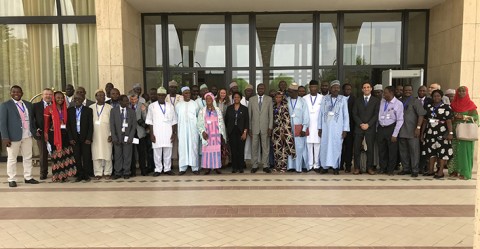
BIOsphere and Heritage of Lake Chad (BIOPALT) project
dscf0374.jpg

 The BIOPALT project aims to strengthen the capacity of Member States of the Lake Chad Basin Commission (LCBC) to safeguard and sustainably manage the hydrological, biological and cultural resources of the Lake Chad Basin, thereby contributing to reducing poverty and promoting peace. The Lake Chad Basin is of vital importance both economically and ecologically. Located at the crossroads of Cameroon, Chad, the Central African Republic, Niger and Nigeria, it provides livelihoods to more than 40 million people. Its diverse ecosystems shelter a high diversity of wildlife.
The BIOPALT project aims to strengthen the capacity of Member States of the Lake Chad Basin Commission (LCBC) to safeguard and sustainably manage the hydrological, biological and cultural resources of the Lake Chad Basin, thereby contributing to reducing poverty and promoting peace. The Lake Chad Basin is of vital importance both economically and ecologically. Located at the crossroads of Cameroon, Chad, the Central African Republic, Niger and Nigeria, it provides livelihoods to more than 40 million people. Its diverse ecosystems shelter a high diversity of wildlife.
The project involves a wide range of activities ranging from the establishment of an early warning system for droughts and floods, to the restoration of degraded ecosystems such as the habitats of elephant and Kouri cattle (Bos taurus longifrons) – the latter an emblematic endemic species that plays an important role in social cohesion. BIOPALT also focuses attention on income-generating activities through the promotion of a green economy and the development of the basin’s natural resources. In particular, the project will help states prepare their application files for the creation of a transboundary biosphere reserve in the basin and nomination files for the designation of Lake Chad as a World Heritage site.
The three-year project is financed by the African Development Bank to the amount of US$ 6,456,000 and is implemented via a multi-sectoral approach involving all UNESCO sectors at headquarters and in the field.
News
- 1 of 2
- next ›





